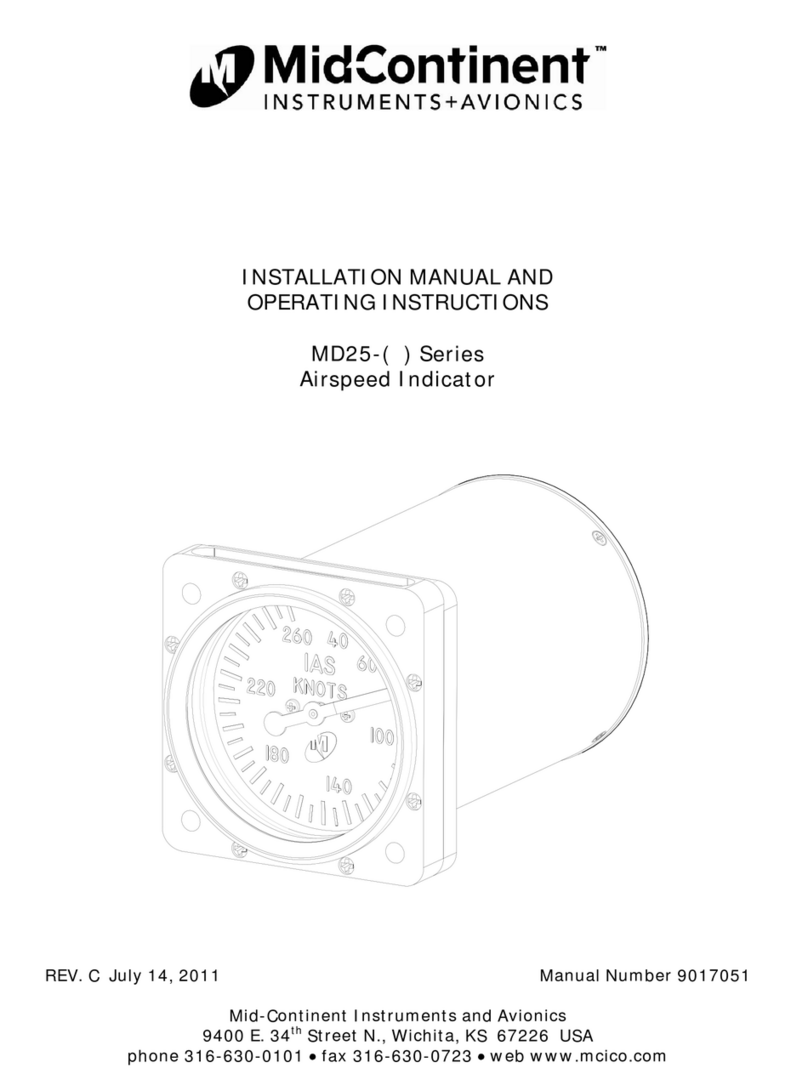MD23-225
User Guide
Mid-Continent Instruments and Avionics 2 User Guide UG225, Revision 1
December 9, 2021
1.1 INTRODUCTION
The model MD23-225 Digital Airspeed Indicator is a standard 2-inch (2-¼”) panel-mounted
instrument that can be configured to display several ranges and range markings for indicated
airspeed. Based on Mid-Continent Instruments and Avionics patented FLEXTM Custom Function
Display, this FAA and EASA TSO-approved instrument bring a highly capable and modern
addition to the cockpit to display required information and provide useful related functions.
This User Guide is a supplement to the Installation Manual and Operating Instructions (IM),
MCIA part number 9019161. The IM contains all information associated with the standard
product, including installation procedures, product specifications, operating instructions,
certification data, and maintenance requirements. This User Guide provides additional
information associated with the specific features of the configurable digital airspeed indicator. It
addresses product identification, electrical pinout, initial configuration setup, and in-flight user
operation.
1.2 PRODUCT IDENTIFICATION
Each MD23 is comprised of certified hardware and certified software. Within the context of the
certified software is a set of data items that can configure and customize the behavior of the unit.
This set of data is referred to as a Custom Instrument Definition, or a CID file. The CID file for
this instrument is pre-loaded and may be available for future updates via a standard USB flash
drive through the programming port on the rear of the unit.
A unique CID number has been assigned specifically to this application. The CID is identified by
its two-digit number and an alphabetic character representing the CID version, starting with “A”.
The identification of the hardware, software, and CID configurations are listed below. Both the
software version and the CID can be viewed on the Introduction Screen during the first few
seconds of applying power to the unit. This information can also be accessed on the Info page of
the Options Menu during Flight Mode.
PRODUCT FUNCTION
The Configurable Digital Airspeed Indicator primarily provides indicated airspeed up to 500
knots. Airspeed is numerically presented as a scrolling value in a central window (known as a
‘counter drum’) with 1 unit resolution. A single pointer also provides visual analog representation
with selectable maximum ranges of 160, 200, 300, 400, or 500. Colored range marking arcs can
be configured to represent various speed thresholds for a given installation. Airspeed units are
available in knots or miles per hour.
Other features include a dynamic MMO, or barber pole, function, a Mach number display, and
optional display of external data such as true air speed (TAS) and ground speed (GS). The
instrument can also provide airspeed and Mach number as a digital output to other equipment.




























